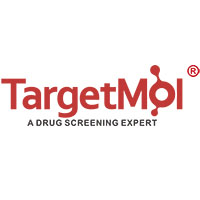| Name | GNE-617 |
| Description | GNE-617, a specific NAMPT inhibitor(IC50=5 nM), shows potency in xenograft models of cancer. |
| Cell Research | GNE-617 is dissolved in DMSO and stored, and then diluted with appropriate media before use.Cells are grown in RPMI-1640 medium supplemented with 10% FBS and 2 mM glutamine and passaged not more than 20 times after thawing. To determine the IC50 values and nicotinic acid rescue status, cells are treated with nine point dose titrations of GNE-617 with or without 10 μM nicotinic acid. At 96 hours post-drug addition, the GNE-617-treated cells are evaluated using CyQUANT Direct Cell Proliferation Assay followed by CellTiter-Glo Luminescent Cell Viability Assay quantified with a Wallac EnVision 2104 Multilabel Reader. IC50 values are calculated using XLfit 5.1. To examine the protein level, cells are lysed in ice-cold radioimmunoprecipitation assay buffer, run on SDS-PAGE (4%-12% Bis-Tris), and evaluated by Western blotting using antibodies directed against NAPRT1 and β-actin |
| Kinase Assay | For RNA interference (RNAi), A549 cells are plated at 1,500 cells per well in 96-well plates, allowed to adhere for 24 hours, and transfected with 25 nM siRNA oligonucleotide using Dharmafect 4. Transfected cells are treated with the indicated concentrations of GNE-617 (0.1, 1 , 10 , 100 , and 1000 nM) for 72 hours and viability is evaluated with CellTiter-Glo. Lysates for detection of NAPRT1 protein are collected 72 hours after transfection of 1 million A549 cells in 10 cm dishes. For NAPRT1 re-expression, RERF-LC-MS cells are transfected with pCMV6-AC.NAPRT1 and empty vector pCMV6-AC using Amaxa Nucleofector technology and selected with Geneticin |
| Animal Research | Male na?ve Sprague Dawley rats are administered once daily via oral gavage with GNE-617( 30?mg/kg), formulated as a solution in the vehicle of 60% polyethylene glycol (PEG 400)/10% ethanol/30% 5% dextrose in water (D5W) . |
| In vitro | In A549 cell, GNE-617 inhibits NAMPT (IC50=18.9 nM) . |
| In vivo | In rat studies, GNE-617 hydrochloride (QD) and GNE-875 (BID) demonstrated greater retinal toxicity at comparable exposures and durations of dosing than did GMX-1778 (BID). The efficacy studies in mice, which evaluated GNE-617, GNE-618, and GMX-1778, also opportunistically investigated retinal toxicity. NAMPTi-induced retinal toxicity was identified in cases involving GNE-617 and GMX-1778. However, varying study durations for GNE-617 and GMX-1778 preclude a direct comparison of their retinal toxicity profiles. |
| Storage | Powder: -20°C for 3 years | In solvent: -80°C for 1 year | Shipping with blue ice. |
| Solubility Information | DMSO : 25 mg/mL (58.49 mM)
|
| Keywords | Pre-B cell colony enhancing factor | Inhibitor | GNE 617 | GNE-617 | PBEF | Visfatin | Nicotinamide phosphoribosyl transferase | inhibit | NAMPT |
| Inhibitors Related | Nampt-IN-5 | CB30865 | Nampt activator-2 | OT-82 | SBI-797812 | Nampt-IN-1 | KPT9274 | CHS-828 | Nampt activator-1 | (E)-Daporinad | STF-118804 | Daporinad hydrochloride |
| Related Compound Libraries | Glycometabolism Compound Library | Target-Focused Phenotypic Screening Library | Bioactive Compound Library | Inhibitor Library | Metabolism Compound Library | Bioactive Compounds Library Max | Fluorochemical Library | Anti-Metabolism Disease Compound Library | Anti-Cancer Compound Library | Anti-Cancer Active Compound Library |

 United States
United States



